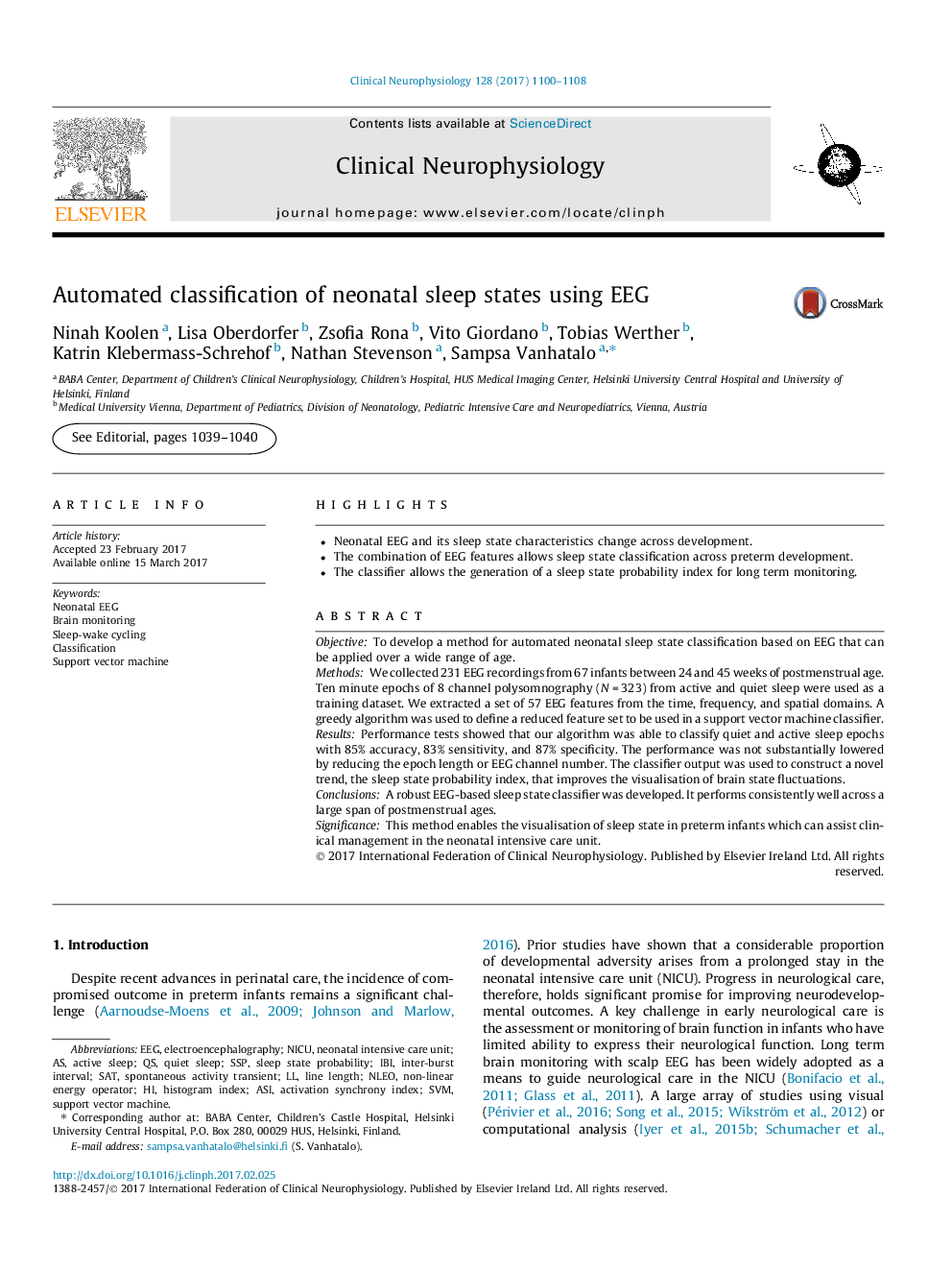| Article ID | Journal | Published Year | Pages | File Type |
|---|---|---|---|---|
| 5627925 | Clinical Neurophysiology | 2017 | 9 Pages |
â¢Neonatal EEG and its sleep state characteristics change across development.â¢The combination of EEG features allows sleep state classification across preterm development.â¢The classifier allows the generation of a sleep state probability index for long term monitoring.
ObjectiveTo develop a method for automated neonatal sleep state classification based on EEG that can be applied over a wide range of age.MethodsWe collected 231 EEG recordings from 67 infants between 24 and 45Â weeks of postmenstrual age. Ten minute epochs of 8 channel polysomnography (NÂ =Â 323) from active and quiet sleep were used as a training dataset. We extracted a set of 57 EEG features from the time, frequency, and spatial domains. A greedy algorithm was used to define a reduced feature set to be used in a support vector machine classifier.ResultsPerformance tests showed that our algorithm was able to classify quiet and active sleep epochs with 85% accuracy, 83% sensitivity, and 87% specificity. The performance was not substantially lowered by reducing the epoch length or EEG channel number. The classifier output was used to construct a novel trend, the sleep state probability index, that improves the visualisation of brain state fluctuations.ConclusionsA robust EEG-based sleep state classifier was developed. It performs consistently well across a large span of postmenstrual ages.SignificanceThis method enables the visualisation of sleep state in preterm infants which can assist clinical management in the neonatal intensive care unit.
